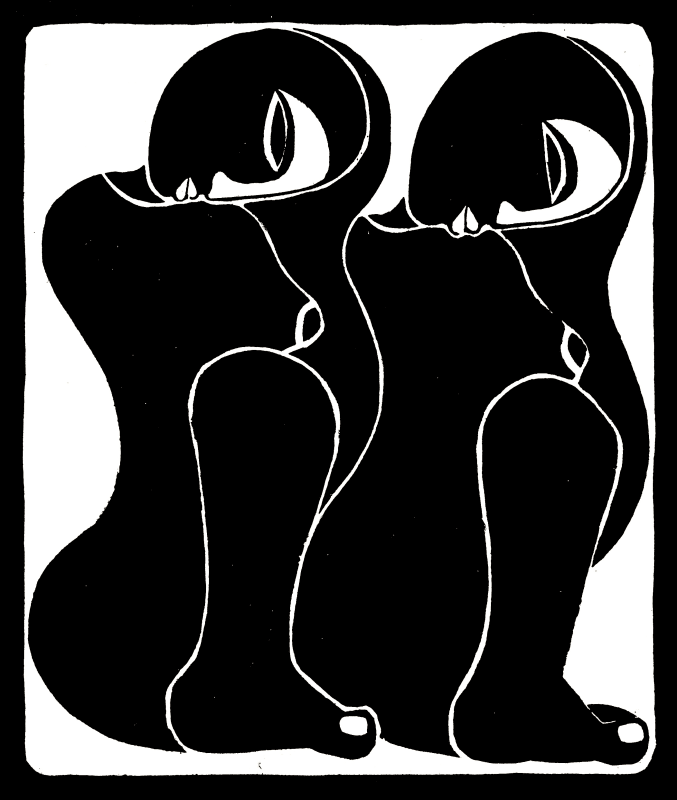Looking at the CEuvre of EL Loko (1950-2016) from Pedkondji, Togo, his painterly and his sculptural works are undoubtedly the focus. For example, his "Cosmic Letters", next to "World Faces" certainly his most important series of works, have been on permanent display at the Zeitz Museum of Contemporary Art Africa in Cape Town since 2016.
His extensive graphic work has become less well known. EL Loko himself, in his endeavour to always present his current works to the public, has unintentionally given his graphics a certain shadowy existence. Yet they deserve special attention for their diversity and high quality. What is more: almost exclusively created in the 1970s and 1980s, they form the foundation on which his later work cycles were able to grow.
In 1969, as a young textile designer who had just completed his training in Accra in neighbouring Ghana, he saw woodblock prints by Nigerian artists while visiting an exhibition - and was spontaneously fascinated by the technique, which had been unknown to him until then. In his own artistic reaction, EL Loko initially produced black and white drawings in a similar style. Having moved to Germany in 1971 and been accepted to study at the Düsseldorf Art Academy, he presented these drawings to his teacher and patron Joseph Beuys. Expressly encouraged by Beuys, he began producing wood prints on the academy's printing press. After initial failed attempts, he produced woodcuts during this period that reflected the myths, ciphers and symbols of his cultural homeland, his African origins. In later years, European influences become increasingly apparent.
Influenced by the intensive encounters with such diverse cultures, EL Loko already developed his own unifying artistic language in these woodblock prints, which characterises his later painterly and sculptural work.
" ... When cutting wood, the artist takes away wood, and this imperfection in the material creates the arc of tension for the eye. Stippled vanishing lines create space, the viewer begins to think, and already the tree itself appears - EL Loko ..." Felix Droese, 2003

